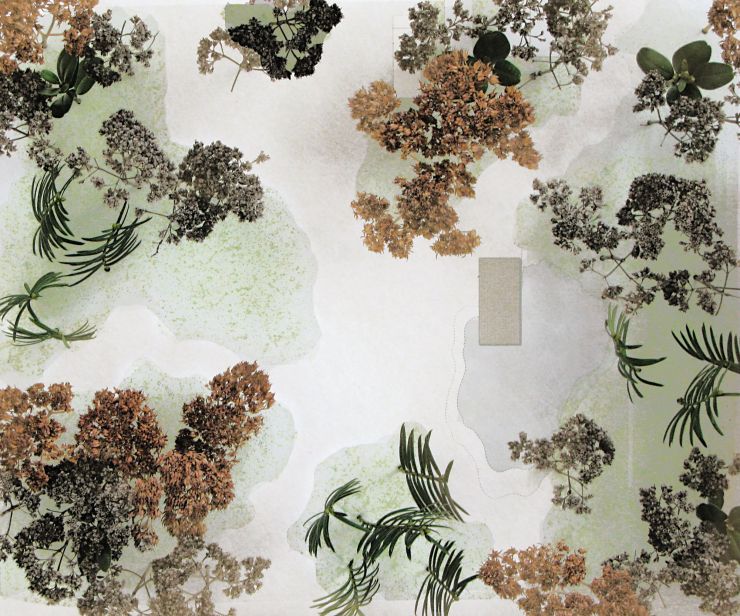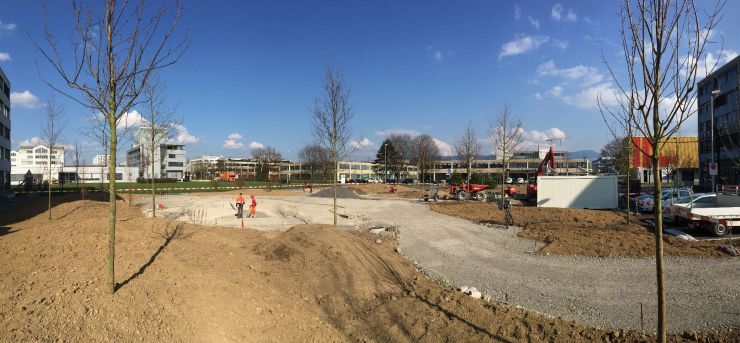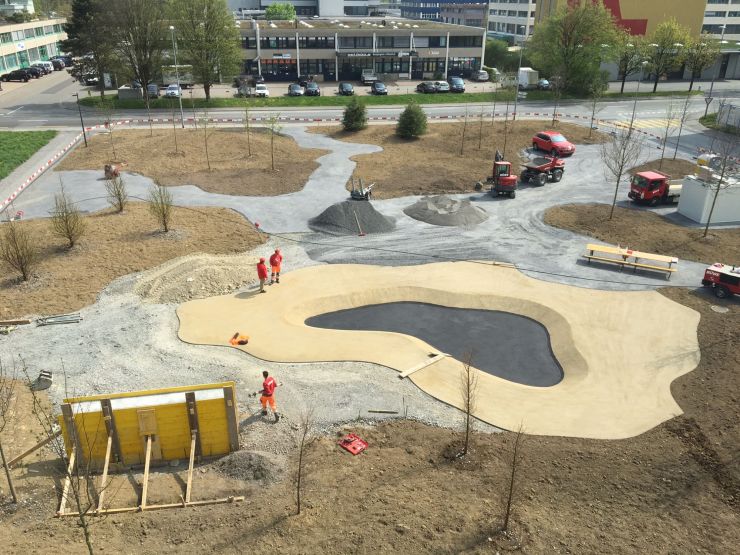Erlenpark, Risch - Rotkreuz
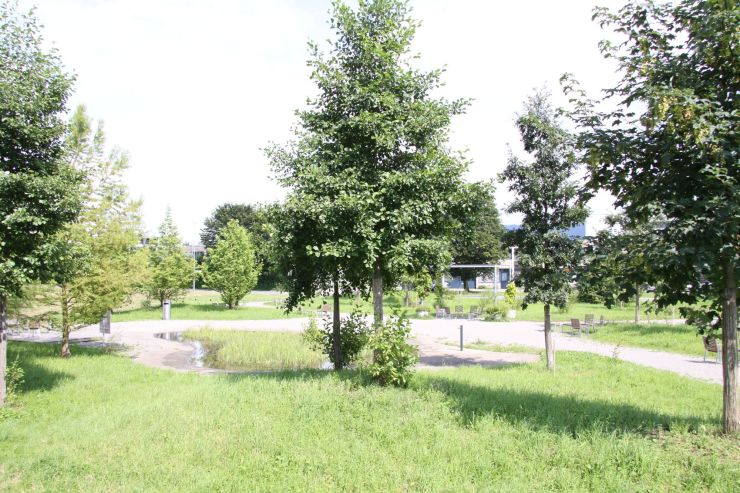
Ort: Risch-Rotkreuz I Planung und Realisierung: 2016-2017 I Bauherrschaft: Einwohnergemeinde Risch-Rotkreuz I Wettbewerb 2015
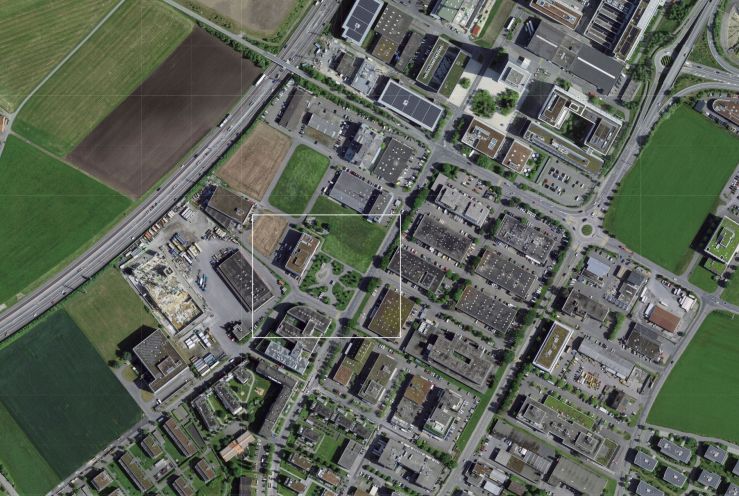
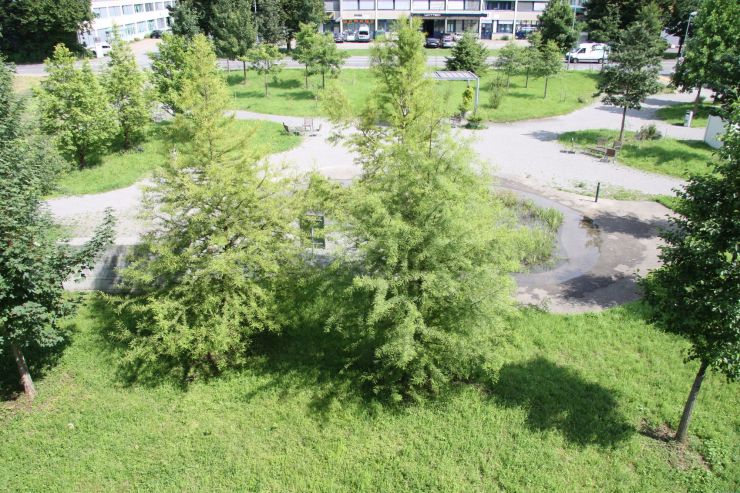
Ein seit Jahrzehnten als Parkplatz benutztes Gelände, in einem Industriequartier in Rotkreuz gelegen, wurde zu einem Park umgestaltet. Dies ist in einem Industriegebiet schon aussergewöhnlich genug, ein Statement. Ein Parkplatz mutiert zu einem Ort der Kontemplation, dem Schönen, dem Müssiggang zugewandt. Der Park ist kinderfreundlich, ohne einen speziell ausgewiesenen Kinderspielplatz aufzuweisen. Er ist ökologisch, trotz und gerade wegen den exotischen Bäumen, die in friedlicher Koexistenz mit den einheimischen Baumarten Erle, Ahorn und Eiche, das vegetative Gerüst bilden. Er ist bewusst gestaltet, ohne dass dies sich einer vordergründig formalen Sprache ausdrückt. Ausgenommen vielleicht die vom Gewerbeverein designten Stühle. Noch sind die Bäume etwas klein, aber ein Park braucht Zeit um sich zu entwickeln und auch dies soll ihm gewährt werden. Es ist ein Projekt wider den Zeitgeist. Der Park wurde nicht mit Anforderungen an das, was er zu leisten habe, überladen. Er soll vor allem ein Ort der Gelassenheit und der Freude sein. Eine atmosphärische Insel, ein Gegenüber zur angrenzenden Bebauung mit der hektischen und durchstrukturierten Arbeitswelt.
Erlenpark Risch - Rotkreuz
Situated in an industrial quarter, the Erlenpark is intended as an atmospheric island for visitors, acting as a counterpart to the adjoining development with its hectic, completely structured working world. The aim is to inspire the senses, take ecological aspects into account and have a structure that can react to future developments in a relaxed way. Meadows, lawns and gravel areas invite people to linger, play and work – WiFi access is freely available in the park! – whether in the shade or in the sun, alone or in a group. The park’s formal language is informal and offers open areas, but also places one can retreat to. The wooden platform is a highlight. The three indigenous tree varieties on the hardwood meadow – oak, maple and alder – form the basic framework of the floral appearance of the park. They not only have considerable ecological qualities, but also recall the former marsh and are perfect for the location since they are moisture-loving trees. They are complemented by selected “foreign” tree varieties that have similar demands as their indigenous counterparts, but are characterised by exceptional flowering colours or leaf forms, as well as having particular atmospheric qualities. With the oak, alder and maple, the park refers to the surrounding landscape, yet by mixing them with exotic varieties, they acquire a very unique and surprisingly cultivated and natural quality.
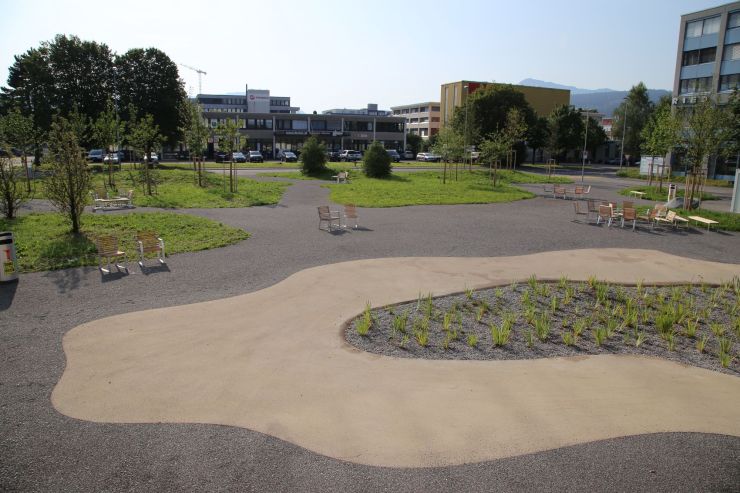
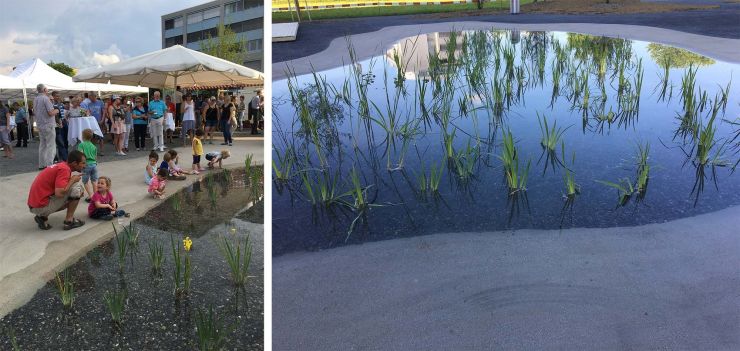
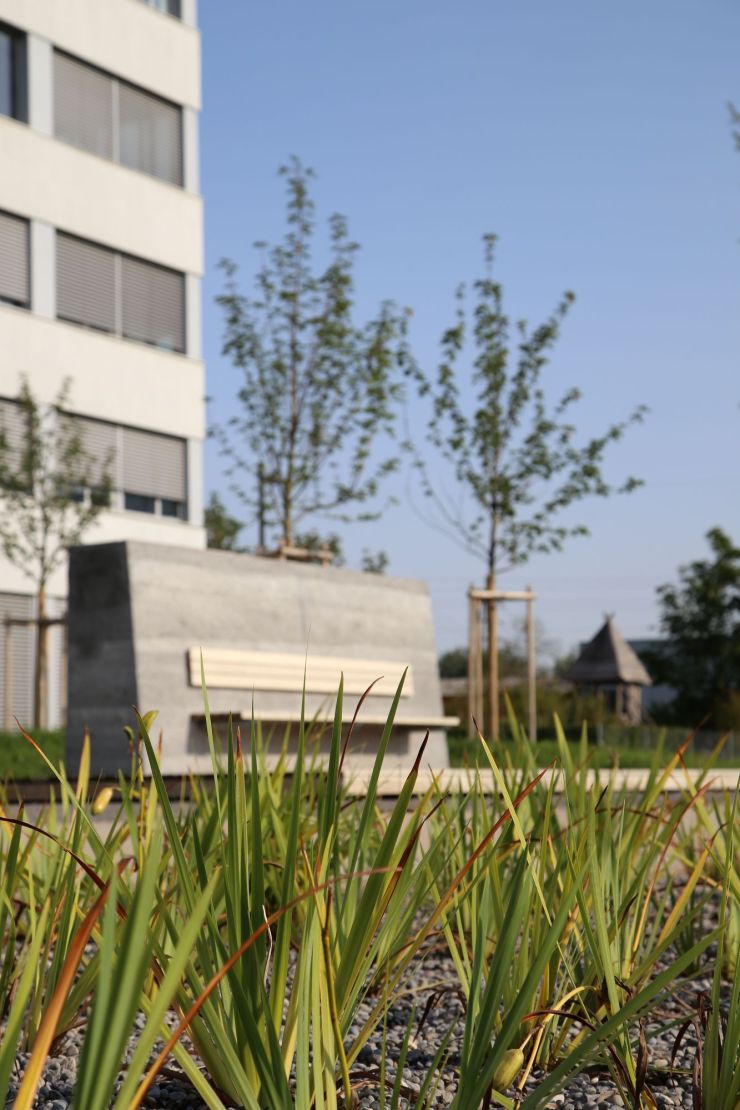
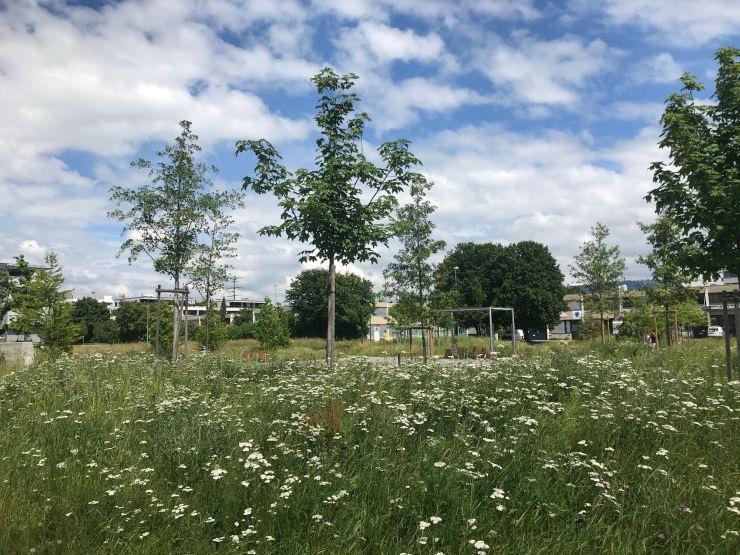
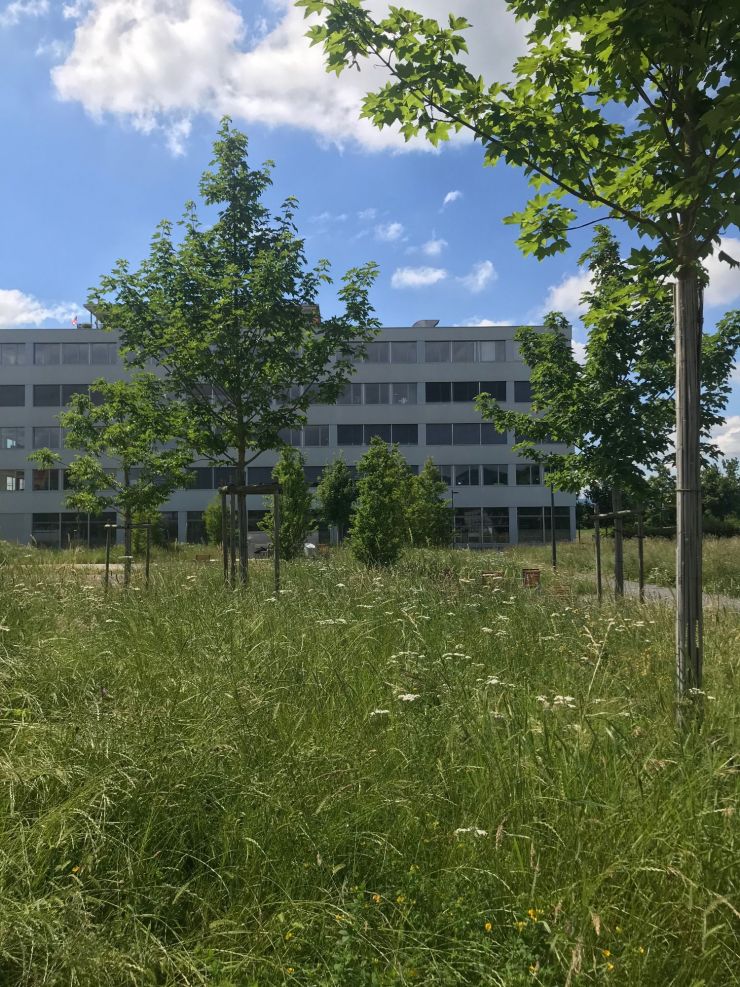
Prozess:
